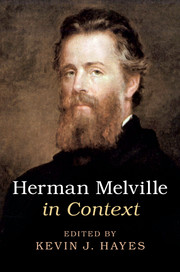Book contents
- Herman Melville in Context
- Herman Melville in Context
- Copyright page
- Dedication
- Contents
- Notes on Contributors
- Preface
- Abbreviations
- Part I Geographical Contexts
- Part II Social Contexts
- Part III Cultural Contexts
- Part IV Literary Contexts
- Part V The Contexts of Literary Reception
- Further Reading
- Index
- References
Further Reading
Published online by Cambridge University Press: 28 December 2017
- Herman Melville in Context
- Herman Melville in Context
- Copyright page
- Dedication
- Contents
- Notes on Contributors
- Preface
- Abbreviations
- Part I Geographical Contexts
- Part II Social Contexts
- Part III Cultural Contexts
- Part IV Literary Contexts
- Part V The Contexts of Literary Reception
- Further Reading
- Index
- References
- Type
- Chapter
- Information
- Herman Melville in Context , pp. 357 - 368Publisher: Cambridge University PressPrint publication year: 2018



